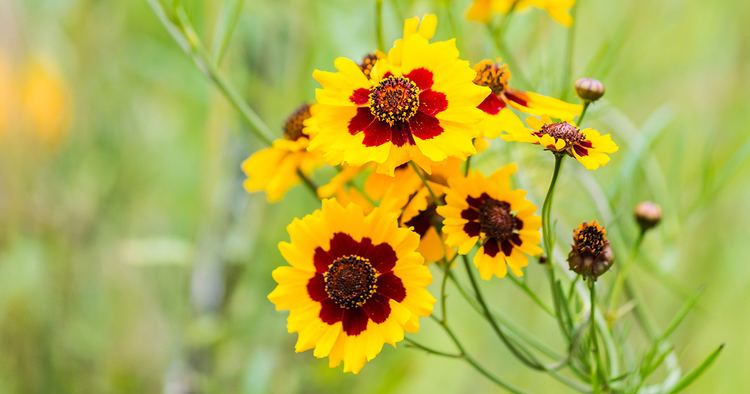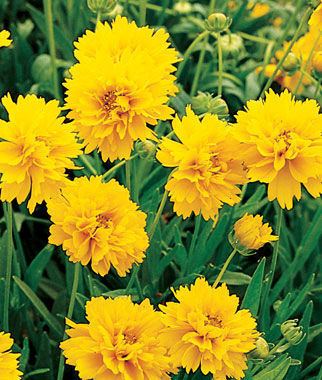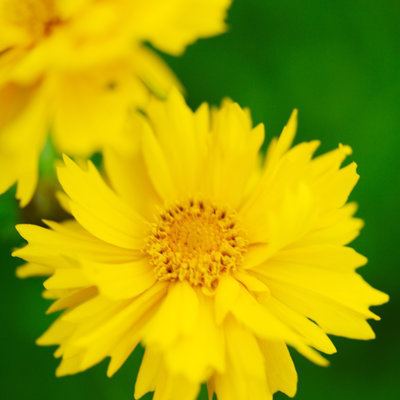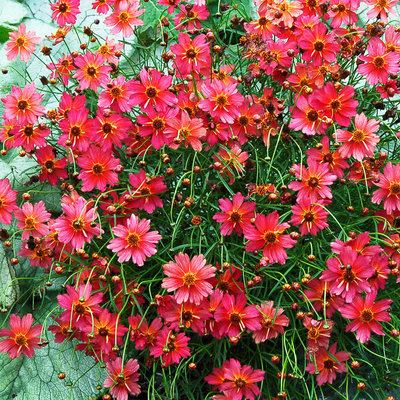Higher classification Coreopsideae | Scientific name Coreopsis Rank Genus | |
Lower classifications Coreopsis grandiflora, Coreopsis verticillata, Plains coreopsis, Coreopsis lanceolata, Coreopsis rosea | ||
How to grow and care for perennial plants how to grow coreopsis
Coreopsis /ˌkɒriːˈɒpsᵻs/ is a genus of flowering plants in the family Asteraceae. Common names include calliopsis and tickseed, a name shared with various other plants.
Contents
- How to grow and care for perennial plants how to grow coreopsis
- Plant pick coreopsis cosmic eye
- Description
- Uses
- Taxonomy
- Distribution and Habitat
- Sections
- Selected species
- Section Anathysana
- Section Calliopsis
- Section Coreopsis
- Section Electra
- Section Eublepharis
- Section Gyrophyllum syn Palmatae
- Section Leptosyne
- Section Pseudoagarista
- Section Pugiopappus
- Section Silphidium
- Section Tuckermannia
- References

Plant pick coreopsis cosmic eye
Description

They range from 46–120 cm (18–47 in) in height. A Common name for Coreopsis is Tickseed. They have showy flower heads with involucral bracts in two distinct series of eight each, the outer being commonly connate at the base. The flowers are usually yellow with a toothed tip. They are also yellow-and red bicolor. The flat fruits are small and dry and look like bugs. Many of its species are cultivated. The 75 to 80 Coreopsis species are native to North, Central, and South America. They have showy flower heads with involucral bracts in two distinct series of eight each, the outer being commonly connate at the base. The name Coreopsis is derived from the Greek words κόρις (koris), meaning "bedbug," and ὄψις (opsis), meaning "view," referring to the shape of the achene.
Uses

Coreopsis species are used as nector and pollen for insects. The species is known to specifically provide food to caterpillars of some Lepidoptera species including Coleophora acamtopappi. The sunny, summer blooming, daisy-like flowers are popular in gardens to attract butterflies. Both annual and perennials types are grown in the home garden (USDA Hardiness Zone 7a/6b). In this Mid-Atlantic region insects as bees, hover flies, wasps are observed visiting the flowers.
All Coreopsis species were designated the state wildflower of Florida in the United States in 1991.

In the language of flowers, Coreopsis means to be always cheerful, while Coreopsis arkansa stands for love at first sight.
Taxonomy

Coreopsis is a variable genus closely related to Bidens. In fact, neither Coreopsis nor Bidens, as defined in the 20th century, is strictly monophyletic. Coreopsis is best described as paraphyletic. Previously (1936) Coreopsis was classified into 11 sections and 114 species, but the African species were subsequently reclassified as Bidens, leaving the North and South American species under Coreopsis, some 75-80 in all. 45 are in the 11 North American sections, and the remaining 35 are in the South American Section Pseudoagarista. The North American species fall into two broad groups, with 5 sections in Mexico and North America (12 species) and the remaining 5 sections in Eastern North America (26 species).
One group which does seem to be monophyletic consists of temperate species from North America, including five sections of Coreopsis, Bidens coronata and Bidens tripartita, and the genus Thelesperma (five species).
Distribution and Habitat
Native North American coreopsis can be found in two habitats In the wild they can be found growing along roadsides and open fields throughout the Eastern
United States and Canada. In this environment the plant will self-sow. They can grow also in a garden as a border plant or in a container. Here the plant prefers well-drained soil. Remove spent flowers so that the plan does not become weedy. Using the USDA Hardiness Zones, will identify what soil and climate is preferred for different cultivars or species.
Sections
One classification (GRIN) of the genus consists of eleven sections, shown by cladistic relationships with number of species in parenthesis.
Mexico and Western North America
Coreopsis sect. Electra (3)Coreopsis sect. Anathysana (1)Coreopsis sect. Tuckermannia (2)Coreopsis sect. Pugiopappus (3)Coreopsis sect. Leptosyne (3)Eastern North America
Coreopsis sect. Silphidium (1)Coreopsis sect. Gyrophyllum (syn. Palmatae) (6)Coreopsis sect. Calliopsis (3)Coreopsis sect. Eublepharis (7)Coreopsis sect. Coreopsis (9)South America
Coreopsis sect. Pseudoagarista (35)Selected species
See:
Section Anathysana
Section Calliopsis
Section Coreopsis
Section Electra
Section Eublepharis
Section Gyrophyllum (syn. Palmatae)
Section Leptosyne
Section Pseudoagarista
South America, 35 species
